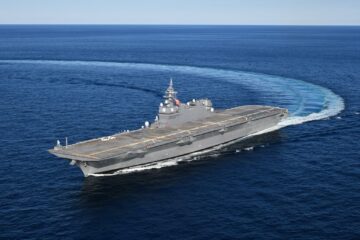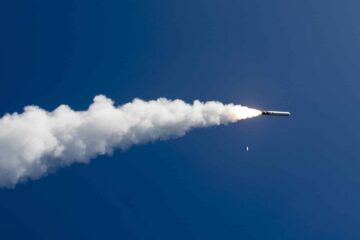Reporting, video and photos by Yoshihiro Inaba
The last Fleet Review was scheduled to take place in 2019, but was cancelled due to a typhoon, so this year’s Fleet Review is the first in 7 years, since 2015. This was also the first International Fleet Review in 20 years, since 2002, when it was held to commemorate the 50th anniversary of the establishment of the JMSDF.
This time, 20 vessels from JMSDF and 18 vessels from 12 foreign countries participated respectively. The names of each of the participating vessels are as follows:

Japan
・DDH Izumo, Hyuga
・DDG Atago, Ashigara
・DD Asahi, Shiranui, Takanami, Setogiri
・DE Sendai
・FFM Mogami, Kumano
・TV Shimakaze
・LST Kunisaki
・AOE Oumi
・MST Bungo
・MSO Awaji
・SS Uzushio, Toryu, Taigei
・ASE Asuka
・PL Izu (Japan Coast Guard)


United States
・CG Chancellorsville
Australia
・DDG Hobart
・FFH Arunta
・AOR Stalwart
・SSG Farncomb
Canada
・FFH Vancouver, Winnipeg

New Zealand
・AOR Aotearoa
South Korea
・AOE Soyang

India
・Shivalik
・Kamorta

Singapore
・Formidable
Pakistan
・Shamsheer
・AOR Nasr

Thailand
・FFG Bhumibol Adulyadej

Indonesia
・Diponegoro
Malaysia
・OPV Kelantan
Brunei
・OPV Darulehsan
Originally, the British Navy was also scheduled to send a vessel but was unable to participate due to a delay in its arrival caused by a cyclone that occurred in the Philippines area. In addition, helicopters and fighter aircraft, including F-35s, from the JMSDF, Japan Ground Self-Defense Force (JGSDF), US Navy, and US Marine Corps (USMC) flew overhead. In addition, the French Navy’s Falcon 200, currently deployed in Japan, also took part in the event. In the latter half of the event, a JMSDF submarine dived and surfaced, an amphibian US-2 demonstrated takeoff and landing at sea, and the Blue Impulse aerobatic team of the Japan Air Self-Defense Force (JASDF) performed a demonstration flight. Prime Minister Fumio Kishida, who was aboard the Izumo, then boarded a helicopter to board the U.S. Navy’s nuclear-powered aircraft carrier USS Ronald Reagan, which was sailing nearby.
At this Fleet Review, Australia, which has grown particularly close to Japan since the Abe administration, sent four vessels, including an Aegis destroyer, demonstrating the strength of the Japan-Australia relationship. After Fleet Review, Australia will continue to participate in Malabar 22, a joint Japan-U.S.-Australia-India exercise which will be held in Japan from November 8 to 15, and will also take part in the Japan-U.S. joint exercise Keen Sword, which will be conducted from November 10 to 19. With a response to China in mind, Japan is further strengthening its multilateral framework while maintaining its alliance with the U.S. as a cornerstone. Australia’s participation in this series of exercises shows that Australia is at the very core of this effort.

The participation of the ROK Navy is also very significant: the ROK requested that the JMSDF refrain from using the self-defense flag flown by JMSDF vessels at the 2018 Fleet Review in South Korea, and in response, the JMSDF cancelled its participation in the event, and in the same year, a South Korean navy destroyer conducted fire control radar irradiation toward a JMSDF P-1 patrol aircraft, plunging Japan-South Korea relations to the worst level. However, with the election of a new South Korean president and the growing threat from North Korea, the relationship between Japan and South Korea is once again being restored. South Korea’s participation in this year’s Fleet Review is a perfect example of this.





